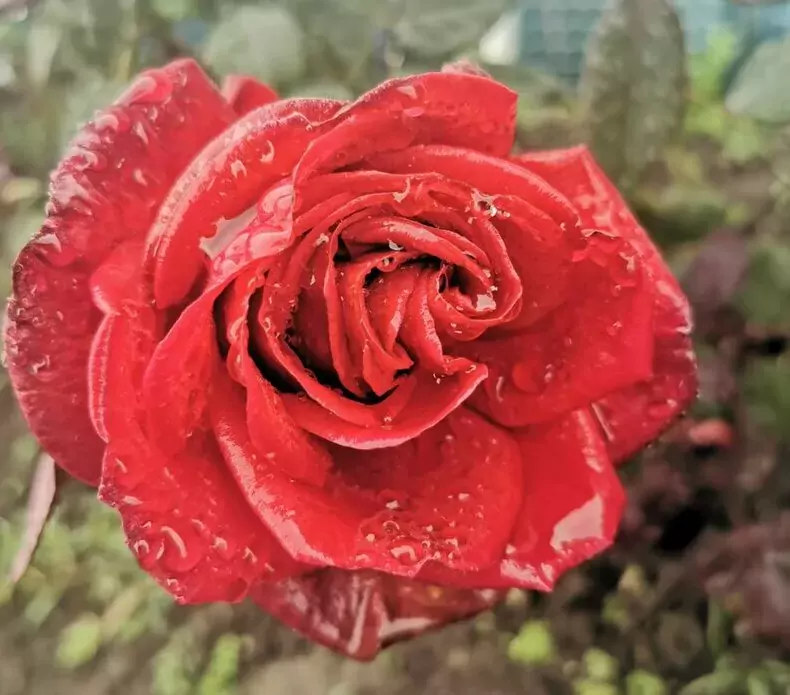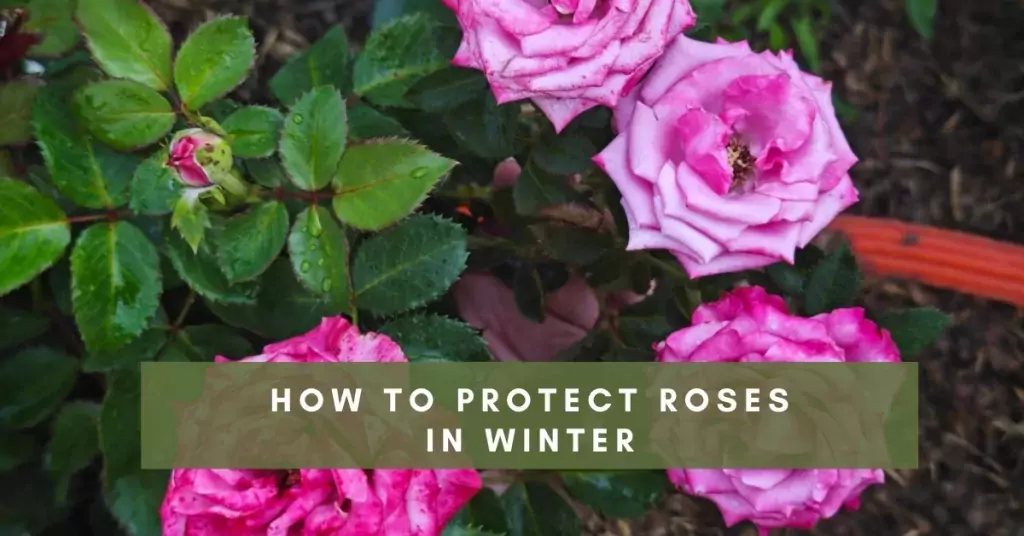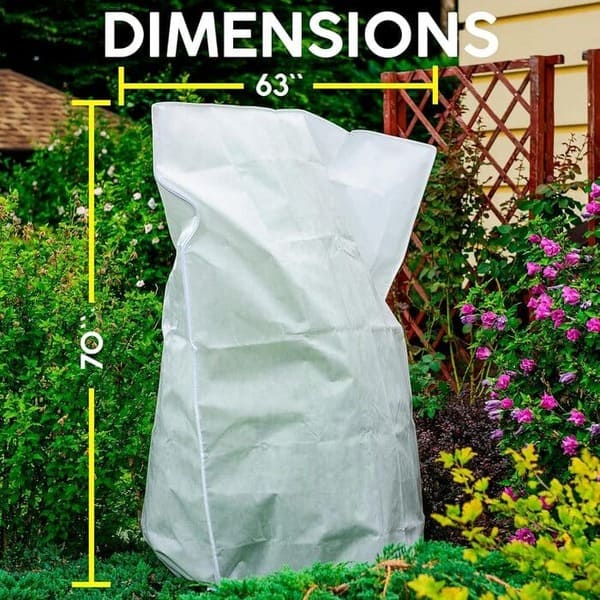Winter can be a challenging time for roses, especially in regions with harsh weather conditions. Proper winter protection for roses is essential to ensure the survival and health of your precious blooms. In this section, we’ll explore the methods and techniques to protect your roses effectively during the colder months.
The Importance of winter protection for roses
As temperatures drop, roses enter a dormant phase, conserving energy and resources for spring. Winterizing is crucial because it protects plants from freezing temperatures, frost, and harsh winds.
Without adequate protection, roses can suffer from cold damage, leading to weakened growth and diminished blooms in the following season.

When to begin winterizing your roses
Timing is crucial when it comes to winter protection for roses. It’s best to commence this process before the first frost sets in. Please keep a close watch on the weather forecast, and when temperatures consistently drop below freezing, it’s time to take proactive measures. Preparing in advance ensures that your roses will be well-protected when the harsh winter weather arrives. However, exercise caution not to cover your roses too early.
Pay attention to the forecast, especially if thaws are expected. The forecasted temperatures should steadily remain below freezing. Covering your roses prematurely might lead to issues; for instance, during thawing periods, your beautiful roses might become susceptible to diseases or even perish under the cover. Therefore, a strategic approach to timing is essential for the health and vitality of your beloved roses during the winter months.
Methods of winter protection for roses
There are several effective methods to protect your roses from winter weather:
- Mulching: Apply a thick layer of organic mulch, such as straw or compost, around the base of the rose plants. Mulch acts as insulation, keeping the soil temperature stable and protecting the roots from extreme cold.
- Rose Cones or Wraps: Specialized rose cones or wraps made of breathable materials are available. These covers shield the entire plant, providing a microclimate that prevents freezing. Ensure proper ventilation to prevent mold growth.
- Soil Mounding: In colder regions, consider mounding soil around the base of the rose canes. This method provides extra insulation and protection against severe frost.
Understanding temperature thresholds
Roses can tolerate light frosts, but when temperatures plummet below 20°F (-6°C), they are at risk. It’s crucial to monitor the local climate and cover your roses before the thermometer reaches this critical threshold.
Different rose varieties have varying levels of cold tolerance, so understanding the specific needs of your roses is vital.

Types of Roses Requiring Special Attention
Certain rose varieties, especially hybrid teas and floribundas, are more vulnerable to cold stress. These varieties often need extra care, such as wrapping with burlap or placing rose cones to shield them from freezing winds.
Protecting Roses in Frosty Regions: Techniques and Tips
Cold climates present unique challenges for rose enthusiasts. In this section, we will explore advanced methods to safeguard your roses in regions where winter hits hard. Let’s delve into the specifics of preparing roses for the chilly days ahead.
Special Care for Roses in Cold Climates
For roses enduring prolonged freezing temperatures, it’s crucial to implement specialized strategies for winter protection:
- Windbreaks: Constructing windbreaks, such as sturdy burlap screens or wooden barriers, provides essential shielding against harsh winter winds. These barriers act as a protective shield, minimizing wind chill and safeguarding the integrity of the rose canes.
- Rose Wraps with Ventilation: Utilize rose wraps designed with ventilation openings. These wraps serve a dual purpose, allowing air circulation while providing insulation. By maintaining a stable microclimate around the plant, they prevent drastic temperature fluctuations that can harm the roses.
Additional Measures for Extreme Cold: In regions where winter means sub-zero temperatures and drying winds, more rigorous measures are necessary for your roses to survive:
Post-Frost Pruning for Rose Care: Following the first frost, it’s time for careful pruning. Start by eliminating lingering leaves and trim the stems down to the sturdiest, healthiest ones, numbering between three to five. Trim these stems to approximately a foot in height. This precise pruning method sets the stage for robust regrowth once spring arrives, ensuring your roses flourish with vitality.
RELATED: Gardener’s Guide to Rose Pruning
Trenching Technique: Dig a trench beside the rose plant large enough to accommodate the entire plant. Gently loosen the plant’s roots with a garden fork to facilitate tipping it on its side and laying it in the trench.
Covering and Mulching: Cover the rose with soil, ensuring the roots are well-protected. Create a mound and pile a 2-inch layer of shredded leaves on top. This natural mulch provides insulation and shields the plant from extreme cold.
Spring Uncovering: In early spring, carefully uncover the rose, ensuring it’s not exposed to late frosts. Replant it in its original position, allowing it to acclimate to the warming weather gradually.
By employing these comprehensive methods, your roses in colder climates can endure the harshest winter conditions, ensuring their vibrant return when spring arrives.
Soil Preparation and Root Insulation
Deep Hydration for Winter Preparation:
Ahead of the ground freezing, indulge your roses in a thorough watering session. Saturating the soil deeply is crucial. Moistened soil possesses superior heat retention compared to dry soil. This thorough hydration is a natural shield, safeguarding the roots throughout the winter chill.
Soil Mounding: In regions with severe winters, consider creating soil mounds around the base of the roses. Mounding provides an extra layer of soil insulation, safeguarding the root system from freezing temperatures.
Winter Protecting Potted Roses
Roses in Containers: Winterizing Techniques
Potted roses are more vulnerable to cold weather due to their exposed root systems. Here’s how you can protect your potted roses during winter:
- Move Indoors: If possible, relocate potted roses to a sheltered location like a garage or shed. This shields them from freezing temperatures and icy winds, ensuring their survival until spring.
- Grouping Pots: Place potted roses close together. Grouping provides mutual insulation, creating a microclimate that is slightly warmer than the surrounding environment.
- Mulching and Wrapping: Apply a layer of mulch around the base of the pot. Additionally, consider wrapping the pots with bubble wrap or burlap. These layers act as insulation, preventing the roots from freezing.
Tree Rose Winter Protection
Tree roses, with their unique structure, require special attention during winter. Follow these guidelines to safeguard these elegant varieties:
- Careful Pruning and Protective Wrapping:
Begin by pruning the canes of your tree roses to a manageable height, typically around 3 to 4 feet. To shield them from snow buildup and winter winds, carefully wrap the canes with burlap or specialized tree wrap. Ensure the wrapping is snug but not overly tight, allowing essential airflow.
- Embrace Mulching at the Base:
Envelop the base of your tree roses with a generous layer of mulch. Mulching offers vital insulation, curbs soil erosion, and maintains stable soil temperatures, which is crucial for the roots’ well-being during the harsh winter months.
FAQ Section: Winterizing Roses
It’s advisable to start protecting your roses when temperatures consistently drop below 20°F (-6.7°C). However, specific temperature tolerance varies among rose varieties.
Yes, you can use soil to cover the base of roses. However, avoid piling soil against the canes directly, as it may lead to rot. Use a loose, well-draining soil layer for insulation.
Yes, roses can stay outside during winter, especially if they are cold-hardy varieties. Proper winterizing techniques, such as Mulching and wrapping enhance their survival chances.
Some cold-resistant rose varieties, like the ‘Knock Out’ and ‘Canadian Explorer series exhibit excellent winter hardiness. While they may not require extensive covering, providing mulch around the base is beneficial.
Yes, roses are susceptible to frost damage. Freezing temperatures can harm their delicate petals and foliage. Proper winterization techniques, such as Mulching and wrapping, can mitigate this risk.
To cover roses for winter, use materials like burlap, specialized rose cones, or horticultural fleece. These materials provide insulation while allowing necessary airflow. Avoid plastic, as it can trap moisture and create a humid environment, increasing the risk of diseases.
While most roses do not bloom in winter due to the cold temperatures, some varieties, such as certain types of shrub roses and miniature roses, can produce occasional winter blooms in milder climates.
However, the majority of roses enter a dormant phase during winter, focusing on conserving energy for the upcoming spring.
By following these tips, you will be able to overwinter with confidence, ensuring your roses are healthy and viable. With proper care, roses will thrive and delight the garden with their beauty and fragrance as spring arrives.
If you have any questions, post them in the comments, and I’ll be happy to answer them for you.
Happy gardening!



